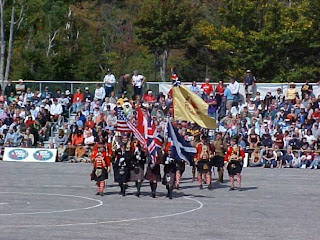Hartford, Conn. – The 34 million American adults who don’t identify with any particular religious group reflect the general population in terms of marital status, educational attainment, racial and ethnic makeup, and income, according to American Nones: The Profile of the No Religion Population, a new study by Trinity College researchers.
The study was conducted by Trinity Professors Barry Kosmin and Ariela Keysar, assisted by Professor Ryan Cragun of the University of Tampa and Juhem Navarro-Rivera of the University of Connecticut.
“The secularity of the American public is undoubtedly increasing but the pace varies considerably between how individuals belong, believe and behave,” said Kosmin. “The overall trend is being pushed by men and the young but slowed down by women’s greater religiosity.”
Today, there is not a single demographic group in the U.S. that does not include Nones. They exist among the married, widowed, divorced, and never married. Nones are Democrats, Republicans and independents. They are among the least educated and the most educated. They are among the rich and the poor. They can be white, black, Latino or Asian. Nones live in every region and state in the country. “In many ways, Nones are the invisible minority in the U.S. – invisible because their social characteristics are increasingly similar to the general population,” said Keysar.
The name Nones refers to a diverse group of people who do not identify with any of the options in the American religious marketplace. They are the irreligious, the unreligious, the anti-religious, and the anti-clerical. Some believe in God; some do not. Some may participate occasionally in religious rituals; others never will.
There is a variety of belief in God among the Nones, ranging from theism to atheism, although the largest proportion (59 percent) is agnostic or deist. A small minority are atheists. Nones are simply more likely to be skeptics. Nones are not particularly superstitious or partial to New Age beliefs and they are more accepting of human evolution than the general U.S. population. Most Nones are first generation as only 32 percent of current Nones report they had no religion at age 12. That is to say, two-thirds were raised with a religion.
Those are among the findings of a new in-depth look at a slice of the American Religious Identification Survey (ARIS), which questioned 54,461 adults in either English or Spanish between February and November 2008. ARIS 2008, which was released in March of this year, was the third in a series of large, nationally representative surveys of U.S. adults in the 48 contiguous states. ARIS 2008 employed the same research methodology that was used in the 1990 and 2001 surveys. With a sampling error of +/- 0.3 percent, ARIS 2008 provides the only complete portrait of how contemporary Americans’ religious patterns have evolved over the past generation.
The most important and statistically significant finding is the relatively large gender gap. American women remain more religious than men. Whereas 19 percent of American men are Nones, only 12 percent of women are Nones. This is one social factor that has not narrowed since the first ARIS survey in 1990. Even when they identify themselves as Nones, women are less likely to be atheists and to take hard skeptical positions. Thus, gender difference is a brake on the growth of the No Religion population in the U.S.
The 1990s was the decade of the “secular boom.” Regarding the percentage of adult Americans who claim no religious affiliation, the researchers found that it had grown from 8.2 percent in 1990 to 14.2 percent in 2001 and to 15 percent in 2008. The growth of the Nones is a national phenomenon. They are the only group that increased in every state and region of the country during the past 18 years.
In the future, the U.S. can expect to have more Nones given that 22 percent of adults under the age of 30 identify themselves as such, and that they will become tomorrow’s parents. Cragun suggests that, “If current trends continue, the likely outcome is that in two decades, the Nones could account for about one-quarter of the U.S. population.”
In analyzing the data, the researchers determined who these Nones are and what characteristics can be attributed to them. What they found was somewhat surprising.Nones are disproportionately likely to be politically independent (42 percent), one-third of Nones claim Irish ancestry, and 28 percent of the Nones now live in southern states.
“Politically, older Nones were often libertarian Republicans but the younger generation of Nones, born after 1973, has associated the Republican Party with the Religious Right and, as a result, split between the Democrats and the Independents,” said Navarro-Rivera.
For more information or to download a copy of American Nones: The Profile of the No Religion Population, please visit:http://www.americanreligionsurvey-aris.org/reports/NONES_08.pdf





